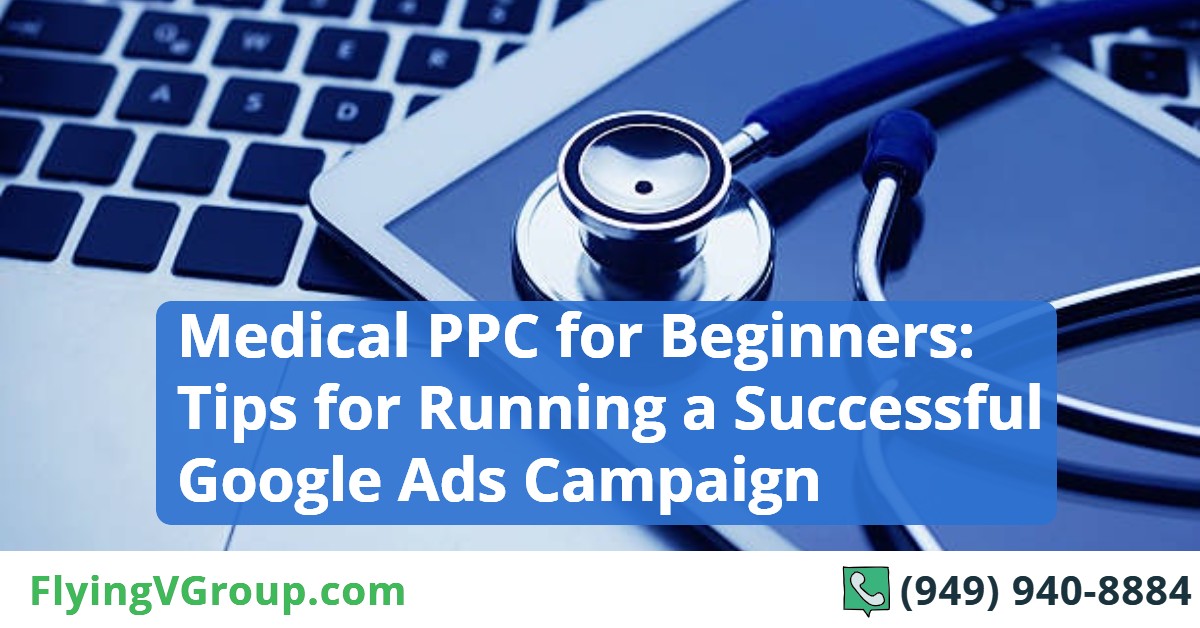According to WordStream’s Google Ads benchmarks, the healthcare sector has an average conversion rate of 4.63%, a CPC of $3.13, and a CTR of 3.82% on the display network.
Google ads have become one of the most popular ways to generate leads and drive customers to your business website, so it’s only natural that more and more healthcare professionals are turning to it to gain new patients in their field.
Medical paid search advertising (sometimes called Pay Per Click or PPC) can effectively reach your target market.
(Source: Blue Corona)
All businesses face challenges when it comes to paid search marketing. However, the healthcare industry faces specific challenges that you must consider before launching a medical paid search marketing campaign. Learn how to prepare yourself to avoid these pitfalls when tackling your next medical PPC campaign in this complete guide.
We’ll dive in after this outline:
- Introduction to Paid Search for healthcare professionals
- How can Google Ads grow your medical practice?
- The latest Google Ads Healthcare Policy
- Google Ads challenges that healthcare marketers face when launching a healthcare Paid Search campaign.
- Google Ads tactics for healthcare advertisers
- Introduction to Paid Search for Healthcare Professionals
- How Can Google Ads Grow Your Medical Practice?
- The Latest Google Ads Healthcare Policy
- Google Ads Challenges that Healthcare Marketers Face When Launching a Healthcare Paid Search Campaign
- Google Ads Tactics for Healthcare Advertisers
- What Comes Next?
Introduction to Paid Search for Healthcare Professionals
How much do you know about paid search marketing?
Suppose you’re like most healthcare professionals, not a lot. But healthcare paid search marketing can be an exceptional advertising tool, primarily when used with your search engine optimization strategy.
What is paid search?
Paid search, or paid advertising, is where businesses pay to display their ads when users search online. Depending on who’s searching and what they’re looking for, these ads might show up at or near the top of a results page in Google’s results (or other search engines) or below organic listings.
(Source: Market Function)
PPC for healthcare refers to using pay-per-click campaigns to promote your healthcare business online.
If you want to bring more patients through your doors, it’s crucial to leverage PPC healthcare marketing channels. One of your best options is Google advertising—available in three primary flavors: search engine ads, display network ads, and YouTube.
Why Use Google Ads For Healthcare?
Google ads healthcare are one of your most cost-effective options for online advertising. The average Google user spends about 21 minutes and 11 per visit. Therefore, a Google ads healthcare campaign is a great way to get new patients through your door.
How Can Google Ads Grow Your Medical Practice?
If you’re not using Google Ads to promote your healthcare practice, you’re missing out on an easy way to find new patients and grow your business over time.
Medical practices can use Google Ads in many ways that are beneficial to both new and established businesses, including using it as a marketing tool, lead generation, increasing brand awareness, and increasing website traffic to your site – all of which can help improve the bottom line of your medical practice over time.
(Source: WordStream)
Are you looking to build your medical practice? If so, let’s explore five ways that Google Ads can grow your medical practice.
1) Attract More Patients
It’s no secret that many medical practices struggle to find new patients. The good news is that there’s an easy solution: advertising on Google. Not only does it provide more potential patients, but it costs less per click than other digital marketing channels.
The most effective way to reach potential patients online is through paid advertising. With local, targeted ads on Google Search, your ad will appear directly in front of people looking for a medical professional like you. It’s a powerful way to bring new patients into your practice and serve as an additional channel in your marketing plan.
2) Increase Online Conversions
We can’t emphasize enough how important it is to make sure people who visit your website want to convert. To start, you need a way to track whether or not someone has been on your website. Tracking tools like Google Analytics can work effectively for this purpose.
You should also track what information they’re looking for and how much time they spend on each page. This information will help you pinpoint where your visitors are getting stuck and improve your overall conversion rate.
3) Get Patients When They Need You Most
There’s a big difference between being in business and getting patients. By buying medical PPC ads, you get your services and offerings directly in front of people actively looking for them.
With an already engaged audience, it’s easier to capture new leads than through more traditional means like cold calling or driving around town with a big sign on your car.
4) Increase Calls and Scheduling with Call-Only Campaigns
A campaign with a call-only objective shows your ad to people searching online and has indicated they want to talk to a business rather than click on an ad.
To help your medical PPC ads for healthcare drive more calls, you can use call extensions, including a phone number that leads directly to your business and can be placed above or below an ad.
5) Get New Patient Signups Through Smart Display Campaigns
Most medical practices have a website, but you’re missing out on a massive opportunity if you’re not optimizing it for search engine traffic and patient signups.
Include enticing information about your practice and its offerings in your site content and make sure it comes up in search engine results.
The Latest Google Ads Healthcare Policy
Google’s June 2021 update to its Google Ads healthcare policy was intended to improve the overall quality of healthcare data, decrease the amount of misinformation being disseminated, and provide an easier way for people to find the quality care they are looking for.
(Source: Digital Marketing Agency)
Although there were some initial problems with this Google Ads healthcare policy update that caused issues and delays, Google has been steadily improving its platform’s healthcare paid search capabilities.
Google will revise the Google Ads “Speculative and experimental medical treatment, cell therapies, and gene therapies” policy in the Healthcare and medicines policy in July 2022.
This change will allow organizations with an FDA-issued license or authorization to advertise cell or gene therapies to promote them in the United States. Conversely, entities who do not have an FDA-issued license or permission won’t be allowed to advertise cell and gene therapies through Google Ads.
Furthermore, globally, Google clarifies its policy language to allow solely educational or informative ads for cell or gene therapies, irrespective of regulatory approval status.
With full implementation, this Google Ads healthcare policy update will start rolling out on July 11, 2022.
Google Ads Challenges that Healthcare Marketers Face When Launching a Healthcare Paid Search Campaign
Using Google Ads, the largest medical PPC (pay-per-click) program on the web, has many benefits, but it also comes with its own unique set of challenges not faced by other industries.
However, most of these challenges result from the restricted medical content Google Ads mentions in its rules and regulations.
So, whether you’re trying to market an existing product or develop a new one, you will want to consider these top 6 challenges healthcare marketers face when using Google Ads.
Challenge #1: You Must Use Specific Phrasing
Healthcare advertisers must use specific phrasing in their advertisements. For example, you cannot promise specific outcomes from a product or service. Instead, when featuring testimonials or before-and-after photos on your landing page, use disclaimers like “Results may vary.”
Your landing page must also include an ad copy that matches the one on the landing page. For example, Google’s complex algorithms can easily detect that your ad for bone services leads to a landing page with no information about bones at all.
Challenge #2: You Can’t Use Some Phrases
Besides the products and services you cannot promote, healthcare marketers must avoid specific languages in Google Ads. These issues with phrasing apply to both the ad copy and the landing page copy.
In some circumstances, Google rejects or removes adverts that violate its policies. A low-testosterone clinic, for example, must be very cautious when framing its marketing, as Google may interpret an ad or accompanying landing page to be prohibited adult content.
Challenge #3: You Can’t Market-Specific Services or Products
The third difficulty for healthcare marketers is that they cannot advertise some products and services. For example, ephedra-based products, fat loss supplements, and anabolic steroids are banned.
Products and services may only reach a few people in certain circumstances rather than being banned entirely. Furthermore, you can only advertise specific products and services in regions with a unique Google certification.
Challenge #4: It’s Becoming Too Competitive
Advertising your medical practice on Google Ads is getting increasingly competitive. You’ll need to bid strategically, use negative keywords, and follow advertising best practices when using Google Ads to reach potential patients.
Challenge #5: There is No Retargeting
Google prohibits healthcare marketers from retargeting their advertising to retarget potential patients. So if someone visits your site or clicks on your ad, hospitals will benefit.
Because of potential patient privacy concerns, hospitals and practices can’t use display ads to entice people to return to their websites or click on their medical PPC ads.
That’s why it’s critical to create a conversion-focused landing page so that whoever clicks on your ad can quickly fill out a form or call to show interest in your products or services.
Challenge #6: You Need to Keep Up with the Latest Trends
The healthcare industry is constantly changing. You need to keep up with the latest trends to be successful. It can be a challenge, but staying up-to-date on the latest news and developments is crucial.
Google Ads Tactics for Healthcare Advertisers
When running a healthcare marketing campaign, it’s no surprise that medical paid search advertising will be an essential part of your online strategy. However, with all the restricted medical content Google Ads adds to its rules regularly, it can be difficult to navigate Google Ads as an expert in your field.
These 8 tactics will help you avoid these issues and make the most of your healthcare paid search marketing budget.
1) Create Targeted Campaigns for Specific Services and Procedures
For example, if you want to attract new patients for a particular service or procedure, create a campaign around it and target people who have searched for related terms in their area.
2. Use Mobile-Friendly Landing Pages
People using mobile devices tend to be looking for quick answers, so make sure your landing page has short paragraphs and big buttons that are easy to tap. A mobile-friendly mobile page will increase your quality score and boost conversions.
(Source: Apexure)
3. Run a PPC Ad During Off-Hours
Of course, you don’t need to run medical PPC ads all day long, every day. However, running PPC ads for healthcare during off-hours like lunchtime can help boost conversion rates since fewer competitors will be vying for attention.
4. Test Different Ad Formats
Many kinds of Google ad formats are available, including text-only ads, video ads, and carousel cards. Some work better than others, depending on what you’re trying to sell and how much information people need before making a purchase decision.
5) Test New Copy with Dynamic Keyword Insertion
Even if you have excellent copy, you may find that different keywords have different performances. Therefore, your ad’s performance could drop if you swap out specific keywords.
Dynamic keyword insertion automatically replaces specific keywords with ones that are more likely to drive action, improving your ad’s relevancy and overall click-through rate.
6) Introduce New Service Lines
Another great tactic is to start a new service line. So, instead of just being a general practitioner, add a specialization.
For example, some doctors add weight-loss services or cosmetic dermatology to their practices. These are great ways to attract more patients and increase revenues. It also allows you to showcase your expertise in another area of healthcare.
7) Update Your Website with a Blog
Keeping a running log of your business’s development is crucial for keeping yourself accountable and inspired. So create a directory of your company’s history and its plans for future growth on your website. Doing so will prompt you to think creatively about ways to tackle obstacles and move forward when things seem impossible.
It also helps your patients see that you’re working hard to develop new methods of treatment and service. Putting content up on your website is an easy way to make sure that happens while potentially increasing profits.
8) Find Influencers to Feature You
Influencer marketing is big business and a great way to generate some attention for your business. However, with so many voices competing for space online, you may have trouble getting your website or business noticed if you’re unwilling to spend a little money.
(Source: Engaio Digital)
Influencer marketing pays off in spades if you can afford it. Studies show that influencer campaigns get much higher engagement than standard ads and yield 11x more ROI.
So what makes an influencer?
An influencer is anyone with a large social media following or following on other sites like YouTube is fair game. YouTubers and bloggers often have millions of fans waiting to hear their thoughts and recommendations. Smaller websites can get involved by contacting smaller bloggers interested in free products to review on their channels.
What Comes Next?
Using healthcare Google Ads, the largest PPC (pay-per-click) program on the web, has many benefits, but it also comes with its own unique set of challenges not faced by other industries. Whether you’re trying to market an existing health product or develop a new one, you will want to consider them and find a way to work around them to grow your practice.
Have you considered enlisting the services of an experienced healthcare Google Ads firm to help you surmount these challenges and run a successful medical PPC campaign?
Flying V Group is a healthcare Google Ads firm with experts in all digital marketing strategies to help you get noticed online fast and boost conversions. Contact us.
SHARE THIS POST
Thank you so much for reading Medical PPC for Beginners: Tips for Running a Successful Google Ads Campaign . We really appreciate it! If you have any questions about our article, or can suggest any other topics you think we should explore, feel free to let us know.
Be sure to sign-up for our newsletter to receive monthly emails on all of the latest trends and happenings in the digital marketing space. You will also receive our FREE E-Book with the Amazing Marketing Tools for Powerful Business Growth. Sign-up below!
Also, if you received some value out of this article, please share with your friends or colleagues, or leave a comment/question below. We really appreciate you reading our blog and every share/comment means the world to us and allows us to continue producing valuable tools to help you grow your business!






0 Comments